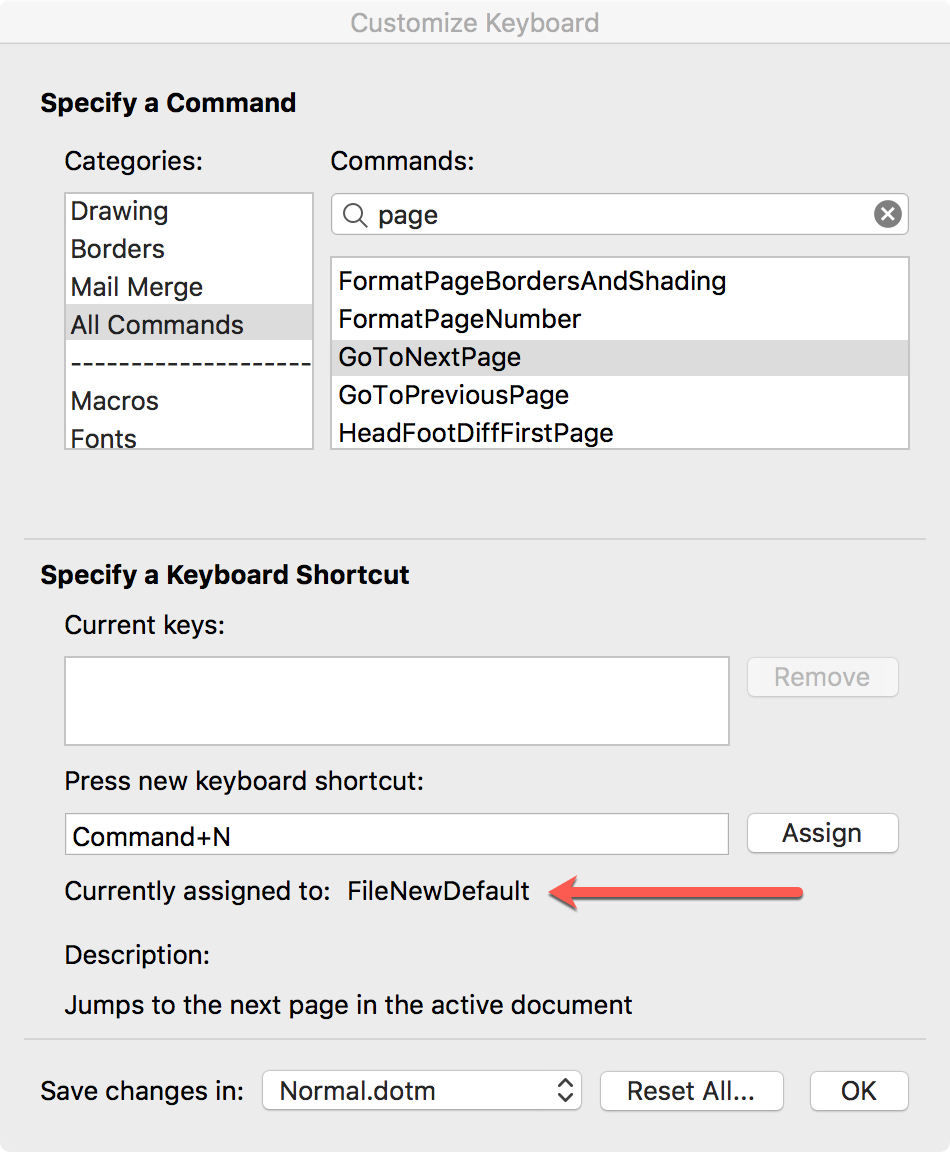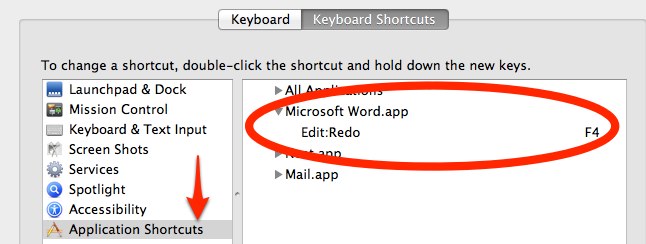

- #Shortcut keys for mac for word full
- #Shortcut keys for mac for word pro
- #Shortcut keys for mac for word plus
- #Shortcut keys for mac for word windows
long names in open and save dialog sheets). These commands can be really handy if you're selecting text in very small boxes where you can't see much (e.g. If you play around with and internalize these commands I think you'll find that keyboard text selection is often faster than moving your hand to the mouse. Also, if you use the keyboard shortcuts without the SHIFT key they will move the cursor without selecting text.
#Shortcut keys for mac for word full
Finally, the PAGEUP and PAGEDOWN keys (plus SHIFT) will select a full "page" up or down.īasically the upshot is this: hold down the SHIFT key while in a text field and it will shift to text selection. The HOME key (plus SHIFT) will select all the text to the beginning of the document and the END key (plus SHIFT) will select all the text to the end of the document. The up/down arrow keys (plus SHIFT) will select a full line up or down with the OPTION key held down the up/down arrows will select a paragraph. The left/right arrow keys (plus SHIFT) will increase the selection one character in that direction, if you hold down the OPTION (?) key the left/right arrows will select an entire word in that direction, and if you hold down the ? key the left/right arrows will select to the beginning or end of the line.
#Shortcut keys for mac for word plus
Note: If a shortcut requires pressing two or more keys at the same time, this topic separates the keys with a plus sign (+).
#Shortcut keys for mac for word windows
To select text you hold down the SHIFT key and then use the arrow keys or HOME, END, PAGEUP, and PAGEDOWN. Many of the shortcuts that use the Ctrl key on a Windows keyboard also work with the Control key in Office 2016 for Mac. The keyboard text selection commands on the Mac are basically standard. So I thought the topic would make for a nice beginning of the year Mac 101. When Mouse Keys is turned on, you can use the keyboard or numeric keypad keys to move the mouse pointer.For someone who loves keyboard launchers like Quicksilver, I have to confess an embarrassing deficiency in my keyboard competency: I've never really learned to select text with the keyboard. To use these shortcuts, first press Control-F2 or Fn-Control-F2 to put the focus on the menu bar. Microsoft Word Shortcut Keys Navigate menus with your keyboard Move to a control adjacent to the text fieldĬlick the default button or perform the default actionĬlick the Cancel button or close a menu without choosing an itemĪctivate the next open window in the front appĪctivate the previous open window in the front app Move sliders and adjusters (Up Arrow to increase values, Down Arrow to decrease values) Move to the adjacent item in a list, tab group, or menu Move the focus to the previous grouping of controls Move to the next control when a text field is selected Switch between navigation of all controls on the screen, or only text boxes and lists

You might also need to make VoiceOver ignore the next key press before you can use some of the other Mac keyboard shortcuts.ģ. keys as standard function keys' in Keyboard preferences.

To use VoiceOver and VoiceOver Utility, you might need to turn on 'Use all F1, F2, etc.
#Shortcut keys for mac for word pro
MacBook Pro (15-inch, Late 2016), MacBook Pro (13-inch, Late 2016, Four Thunderbolt 3 Ports)Ģ. Open VoiceOver Utility, if VoiceOver is turned on 2Ĭontrol-Option-F8 or Fn-Control-Option-F8ġ. Or hold Command and triple-press Touch ID on supported models 1 Or triple-press Touch ID (power button) on supported models 1 For example, ask Siri to ”Turn VoiceOver On.” Action You can use these keyboard shortcuts to control accessibility options, or ask Siri to perform these functions. You can then drag this shortcut to your desktop manually.Ĭontrol accessibility options with your keyboard and Siri This will create a shortcut in the same folder. Alternatively, you can select Create shortcut on the right-click menu. This will create a shortcut to the selected program, and save it on your desktop. Select Desktop (create shortcut) on the Send to menu. Have a MAC computer? Try these shortcuts will make you more productive in no time.


 0 kommentar(er)
0 kommentar(er)
